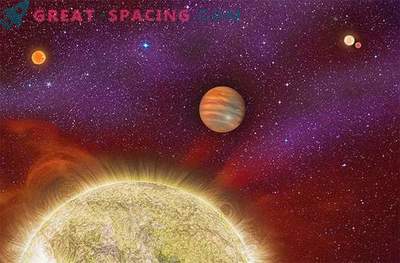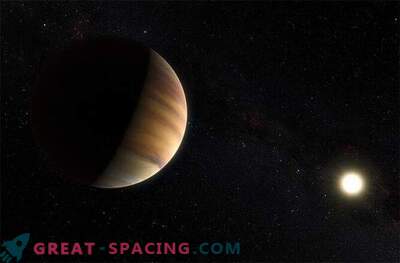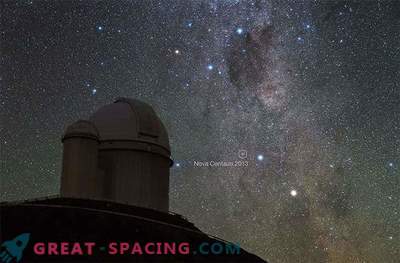
Among the planets of the Solar System, the gas giant Jupiter is considered to be king in terms of the radius. However, among exoplanets, he was not honored to take a leading position. Then which extrasolar planet is considered the largest?
Let's move a distance of 337 light years from the solar system. We are in the beautiful constellation of the Southern Hemisphere Mucha. This is a small constellation in which 60 visible stars are located. We are interested in a single white and blue star HD 100546.
It is interesting in that it contains a protoplanetary disk, where in 2013 they found an exoplanet HD 100546 b. Before you is the largest exoplanet of the Universe among worlds known to science. It was discovered using the Very Large Telescope (Chile).

Comparative dimensions of exoplanets HD 100546 b. For comparison, the bottom left is Jupiter HD 100546 b belongs to the class of gas supergiants. Jupiter is 20 times more in mass, and 6.9 times larger in radius. And the planet continues to grow in size. The remoteness of the world from the native star is 6 times the distance of the Earth-Sun.
It is surprising that a full-fledged planet is located in a protoplanetary disk and is still surrounded by building material for the formation of future planets. The age of the star HD 100546 reaches only 10 million years. How did the exoplanet manage to form? The answer so far can not be found.
It is also interesting that because of its gigantic size, HD 100546 b approaches the category of brown dwarfs. We are talking about substellar objects, whose mass is 12.57-80.35 times the size of Jupiter. Researchers will continue to study the largest exoplanet, and perhaps one day they will change its status from “planet” to “brown dwarf”.











































